We all experience physical pain at times in our lives. Have you ever wondered why? What is inflammation, and why does pain have to be part of the human journey? Continue reading as I guide you through the process of how pain is created.

Our bodies are remarkably resilient and capable of healing and overcoming physical pain. Have you ever wondered why?
Why does pain have to be part of the human journey?
Pain is your body's sophisticated warning system. It's a signal that something is not right or some damage has occurred, prompting you to take action.
What is inflammation?
Pain and inflammation are related, but they're not the same.
🩹 Pain is a symptom. It's what you feel.
🔥 Inflammation is a process. It's your body's response to injury, infection, toxins, or internal imbalance.
You can experience inflammation without pain (this is called silent or low-grade inflammation), and you can still feel pain even after the inflammation has passed (due to nerve sensitivity or chronic pain memory).
🧠 What Causes Inflammation?
Let's say you stub your toe, cut your skin, get exposed to a virus, or eat something your body can't tolerate. Here's what happens:
1. Tissue damage occurs. It could be physical (injury), chemical (toxins), microbial (bacteria or virus), or emotional (stress).
2. Your cells send out distress signals. These are danger molecules, such as ATP and cell fragments, that alert the immune system.
3. Damaged cells release alarm signals, such as ATP and DNA fragments, to alert the immune system that something is wrong or that the cells are dying.
4. Histamine and white blood cells respond immediately:
- Histamine opens blood vessels (so white blood cells can get there quickly).
- It also makes blood vessels wider and more permeable, allowing immune cells, nutrients, and healing proteins to flood the area.
- Histamine also activates nearby nerves, causing pain, itching, or swelling. This is your body's way of saying, "Pay attention; this area needs care."
⚡ How then do you feel Pain?
5. Nerve endings called pain receptors detect the inflammation.
6. They send an electrical signal through the spinal cord to the brain.
7. Your brain interprets the signal and sends feedback that is perceived as pain. That's when you take action in case of a physical injury.
Pain is your brain's response; inflammation is the signal that triggers it.
🦠 Meanwhile, The Immune System Mobilizes
🧹 1. White blood cells like neutrophils and macrophages rush to the area:
- Neutrophils destroy invading pathogens and remove dead cells.
- Macrophages digest debris and send out chemical messages for more help.
🧬 2. Call for Reinforcements
White blood cells release cytokines (proteins that act as messengers), which send signals to molecules that:
- Bring in more immune cells if needed.
- Attract nutrients and repair tools.
These molecules include:
🧈 Cholesterol:
- Acts as a raw material for repairing damaged cells.
- Helps rebuild cell membranes, especially in nerve and skin tissue.
🍇 Antioxidants (vitamin C, E, glutathione, and plant polyphenols):
- Clean up free radicals.
- Prevent nearby healthy tissue from being damaged in the process.
🔥The swelling, redness, heat, and pain are all signs that your immune system is doing its job. This is called Acute Inflammation.
- It’s short-term, can be visible, and is meant to heal quickly.
- Example: a sprained ankle, a sore throat, a cut.

😷 Chronic Inflammation – The Silent Root of Modern Illness
Every cell in your body is like a tiny engine. When it’s working well, it creates energy, repairs damage, and communicates clearly. But when a cell is overloaded, undernourished, or exposed to toxins, it gets stressed.
❗ When the body is constantly exposed to stress, toxins, infections, or emotional overload, and the immune response never shuts off, inflammation becomes chronic. This is where the real trouble begins: it spreads through your gut, brain, joints, skin, and hormones, often without obvious pain at first. It's like a silent invader, causing damage without making a sound.
Chronic or silent inflammation, also known as low-grade inflammation, is a persistent, ongoing immune response that occurs quietly within the body without apparent symptoms, such as pain, heat, or swelling.
It's like a slow-burning fire that keeps the immune system on alert, using resources, triggering oxidative stress, and silently damaging tissue.
Here is a list of Chronic Diseases You Don’t Realize Are Inflammatory
- Type 2 diabetes → Inflammation blocks insulin signaling
- Cancer → Inflammation allows abnormal cells to grow and spread
- Heart disease → inflamed vessels attract plaque and clot formation
- Stroke → chronic inflammation damages blood vessels and increases clot risk
- High blood pressure → Inflamed arteries lose flexibility and raise pressure
- Kidney disease → Inflammation damages nephrons and disrupts filtration
- Blindness and cataracts → chronic inflammation damages the retina and lens
- Depression → neuroinflammation lowers serotonin and mood stability
- Alzheimer’s disease → Chronic brain inflammation activates microglia (brain immune cells)
- Constipation → inflamed gut lining and slowed nerve signals
- Endometriosis, PCOS, and Hashimoto’s → all driven by immune dysregulation
What Triggers Chronic Inflammation?
There are many causes:
- Nutrient deficiencies (so your mitochondria can’t make energy)
- Ultra-processed food, sugar, and seed oils
- Leaky gut
- Chronic infections like viruses or bacteria
- Mold, pesticides, heavy metals
- Emotional trauma and chronic stress (which weakens your body’s repair systems)
- Poor sleep and overwork
- Medications (especially antibiotics, NSAIDs, or steroids)
- Gut microbiome imbalance
- Blood sugar spikes and insulin resistance
- Lack of movement or being sedentary
- Suppressed sadness, grief, or chronic negative thinking
How to Begin Healing
Your body has powerful tools to turn off inflammation if you give it the right environment. Healing is not a distant dream; it's a journey that begins the moment you decide to take care of yourself.
Here’s how to start:
- Eat real, whole, colorful foods rich in greens, omega-3s, antioxidants, and polyphenols
- Remove inflammatory triggers — food, toxins, overstimulation
- Prioritize deep sleep, especially before 10 o'clock
- Hydrate with water and electrolytes
- Move gently and consistently — walking, stretching, dancing, or yoga
- Release stored stress through breathwork, journaling, and emotional healing
- Practice self-love and self-esteem
- Listen to your body’s message! Stay with the pain without any judgment: listen!
- Find your purpose!
Healing doesn’t happen overnight, but it begins the moment you remove what’s harming you and start feeding your body what it truly needs."

🧠 You can feel pain even when inflammation has passed.
1. 🔄 Pain Can Be “Learned” by the Nervous System
Sometimes, the brain and nerves retain the pain signal, even after the tissue has healed. This is called central sensitization or “neuroinflammation.”
Example:
- You sprained your back months ago.
- The tissue healed, but you still feel pain because your nervous system stayed “on alert.”
2. 🧠 Emotional Pain Can Trigger Physical Pain
Past trauma, chronic stress, or fear can amplify pain perception in the brain, even when the body is no longer inflamed.
However, there are rare genetic conditions (like congenital insensitivity to pain) where people do not feel physical pain. These individuals often:
- Break bones without realizing it
- Burn themselves without reacting
- Suffer internal injuries or infections that go unnoticed
- Die young due to complications from undetected damage
💡Pain isn’t the problem; it’s the messenger. And without it, your body couldn’t protect itself from harm.
When it comes to chronic inflammation, I’m always telling my community, "You’ve the power to heal." And that is something you can work on!
Reducing inflammation isn’t just about feeling better; it’s about preventing disease before it takes root.
If this resonated with you, I invite you to continue this journey inside the FOODHEAL Protocol, my 3-month program designed for women living with chronic illness who are ready to reclaim their energy, reduce pain, and heal from the inside.


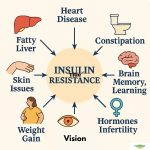
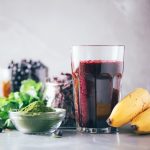
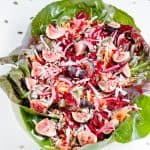



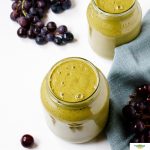
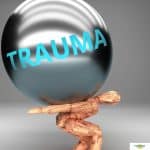

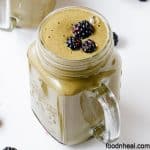






Comments
No Comments